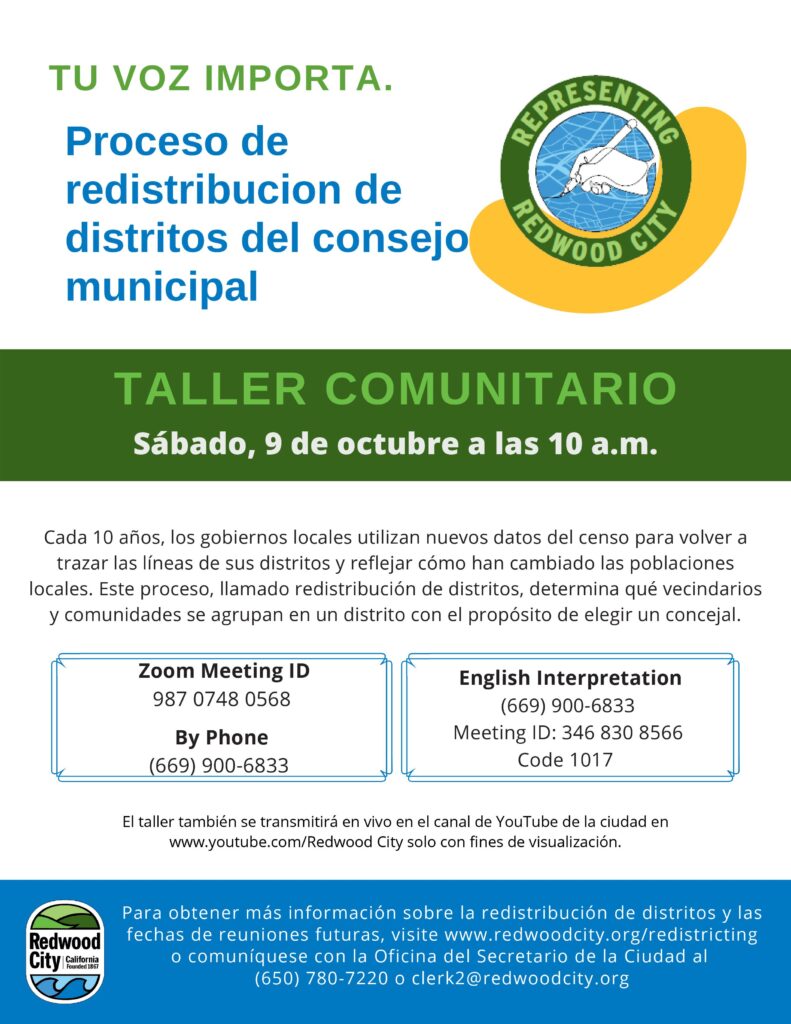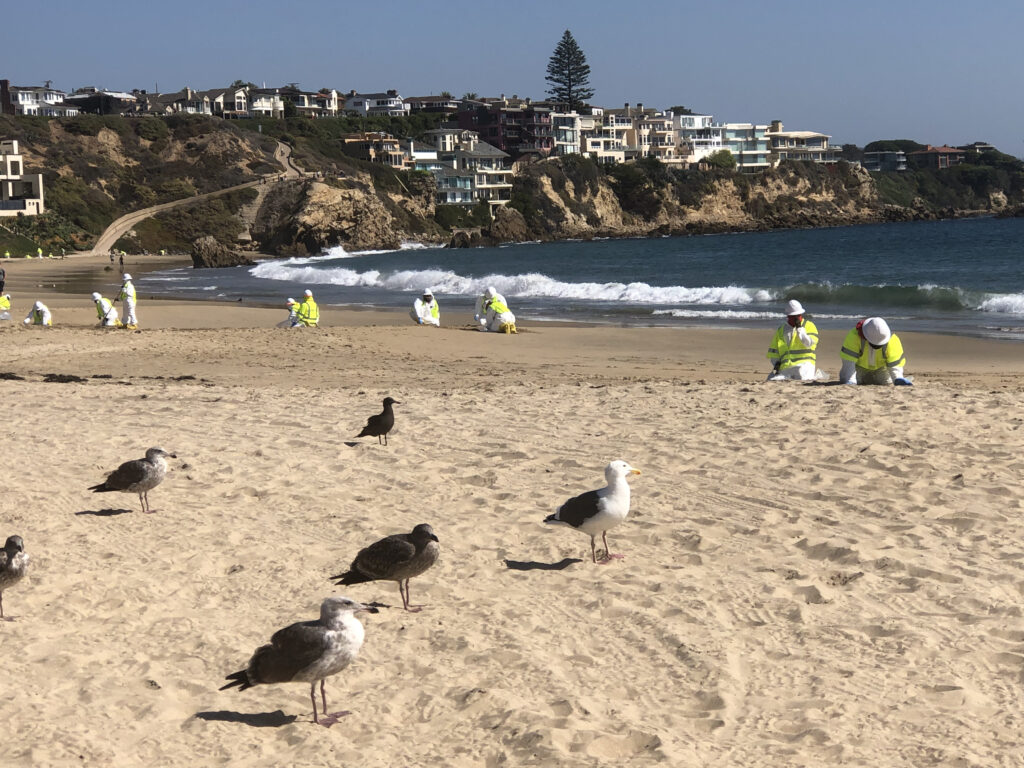
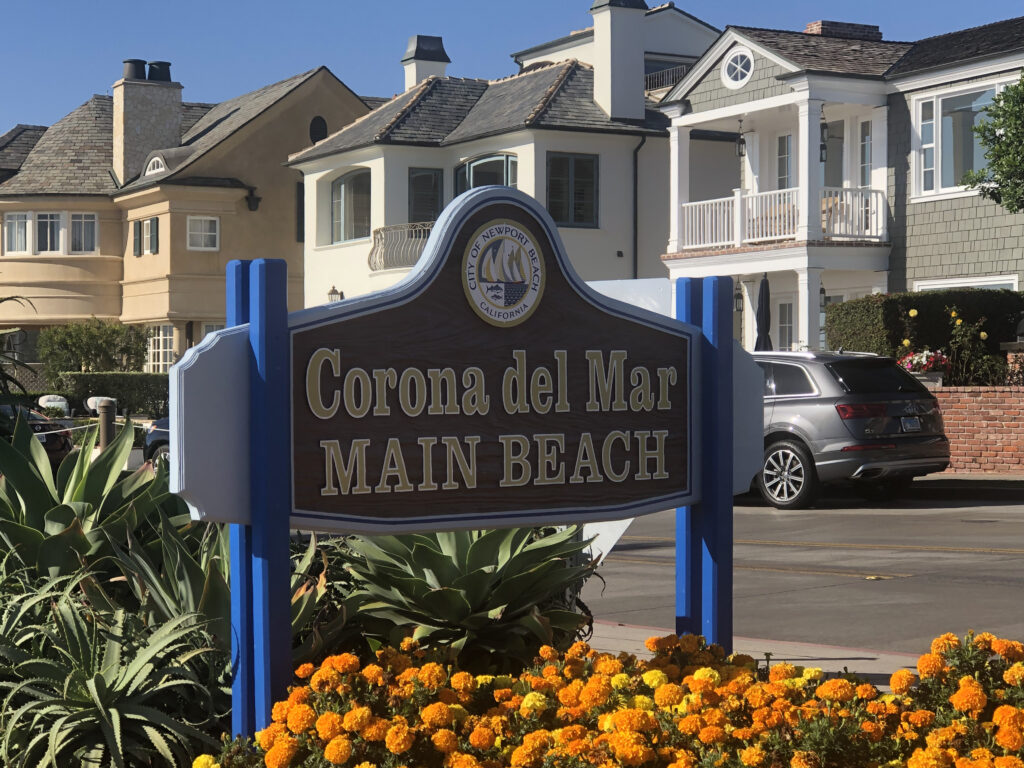
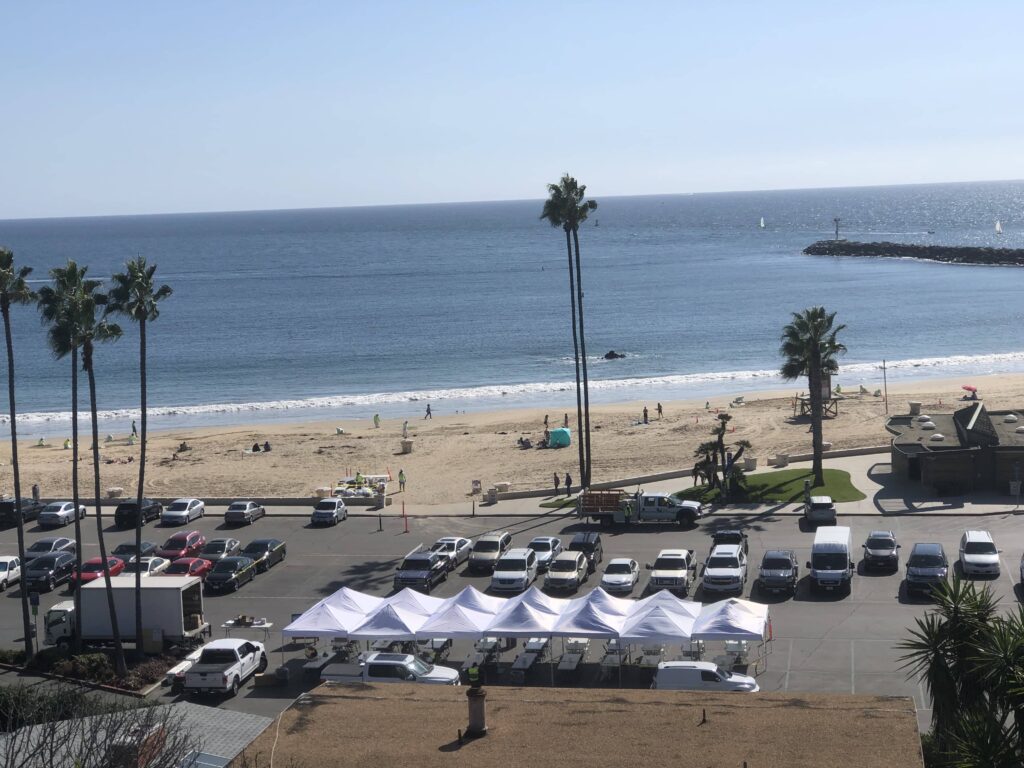
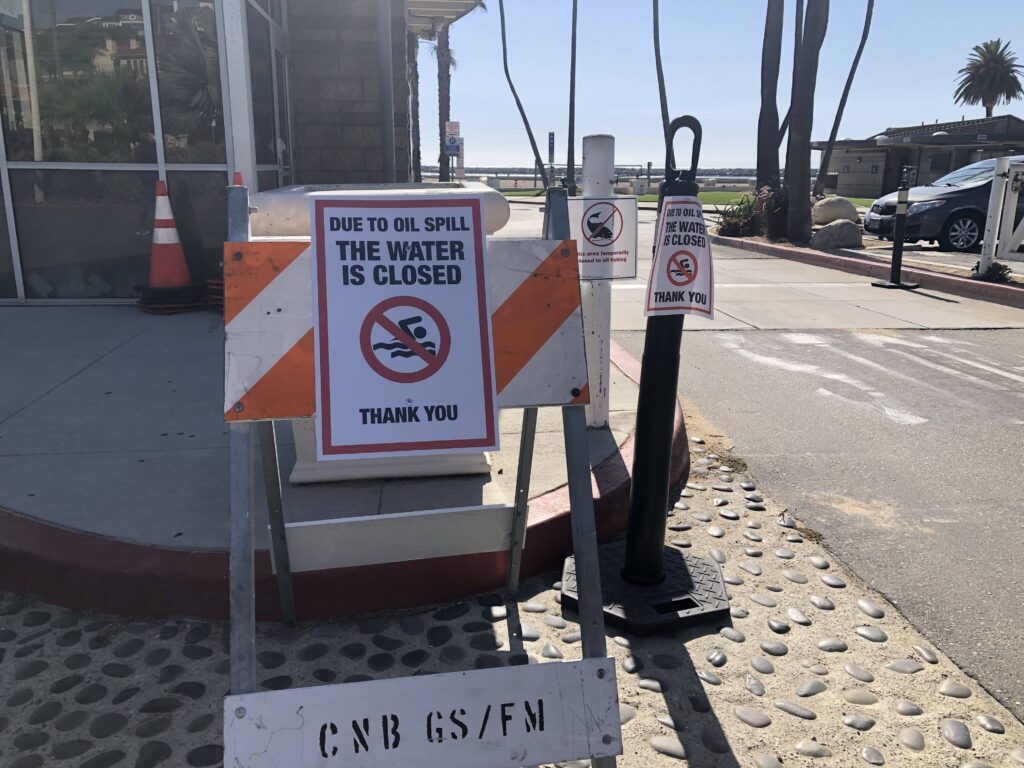
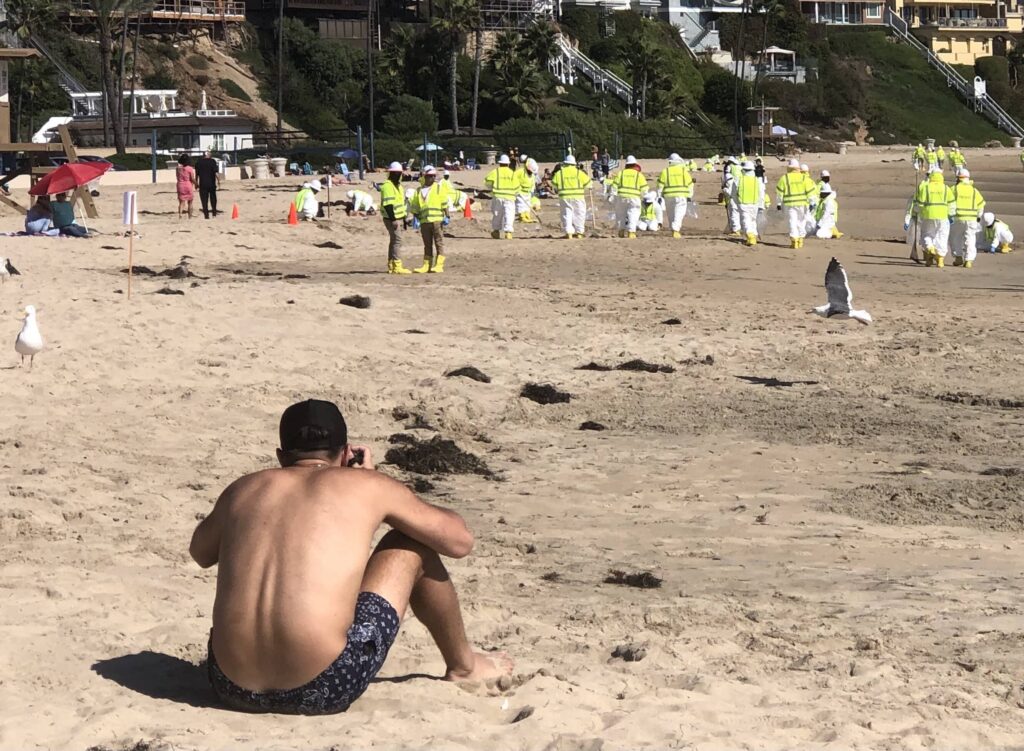
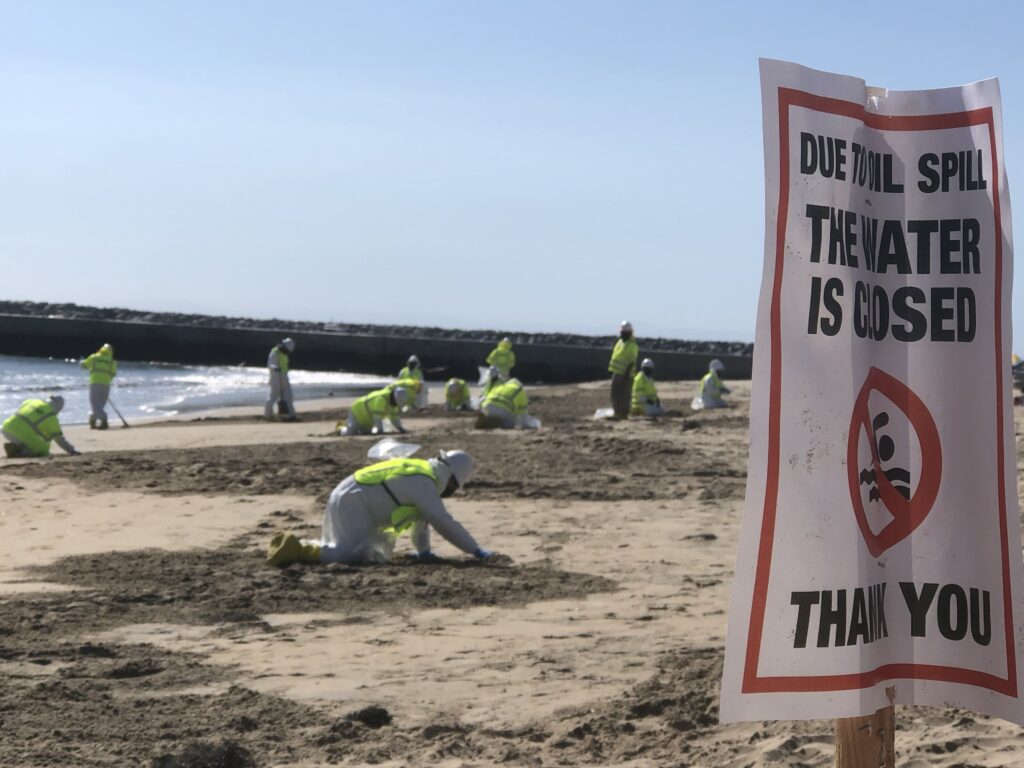
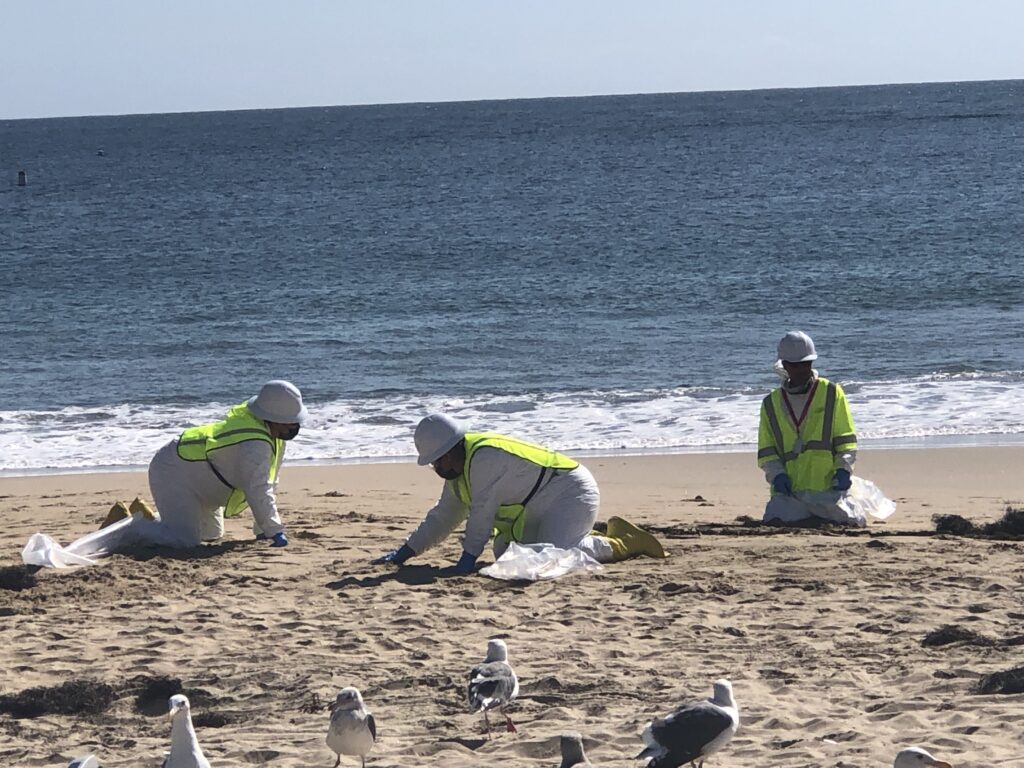
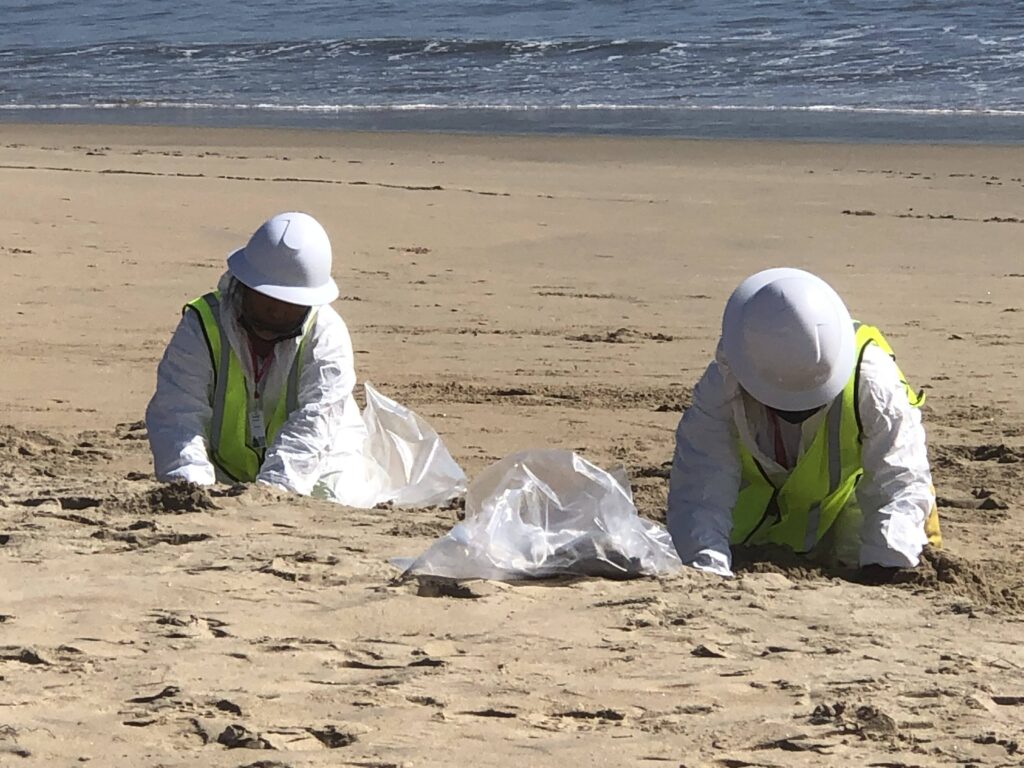
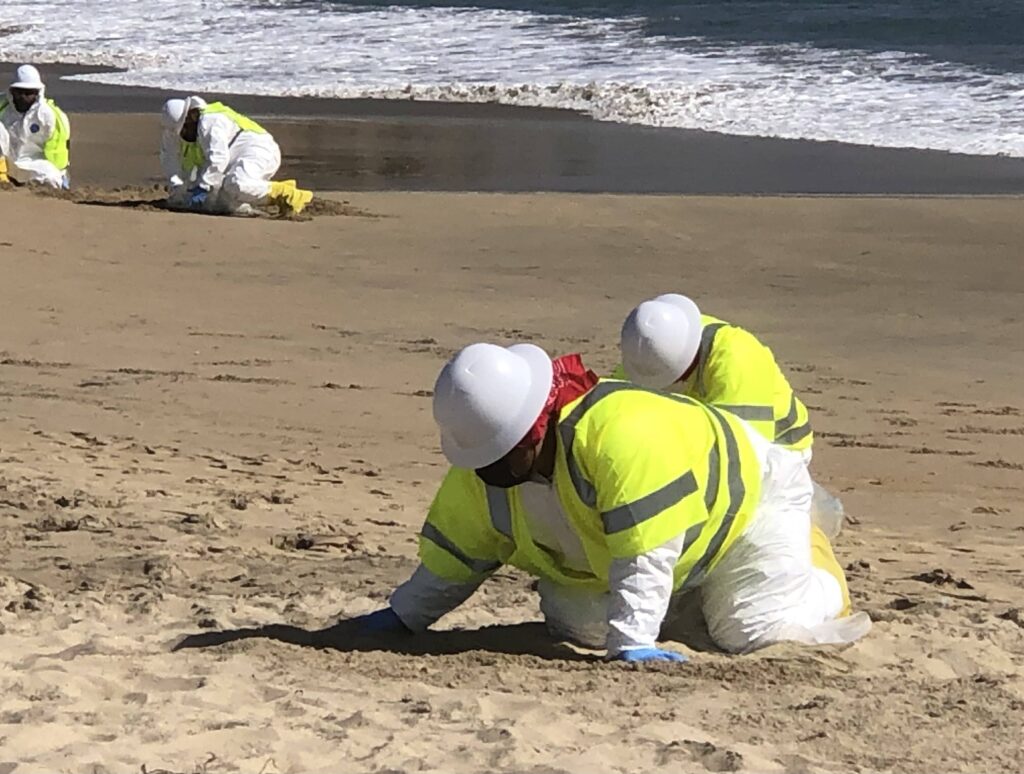
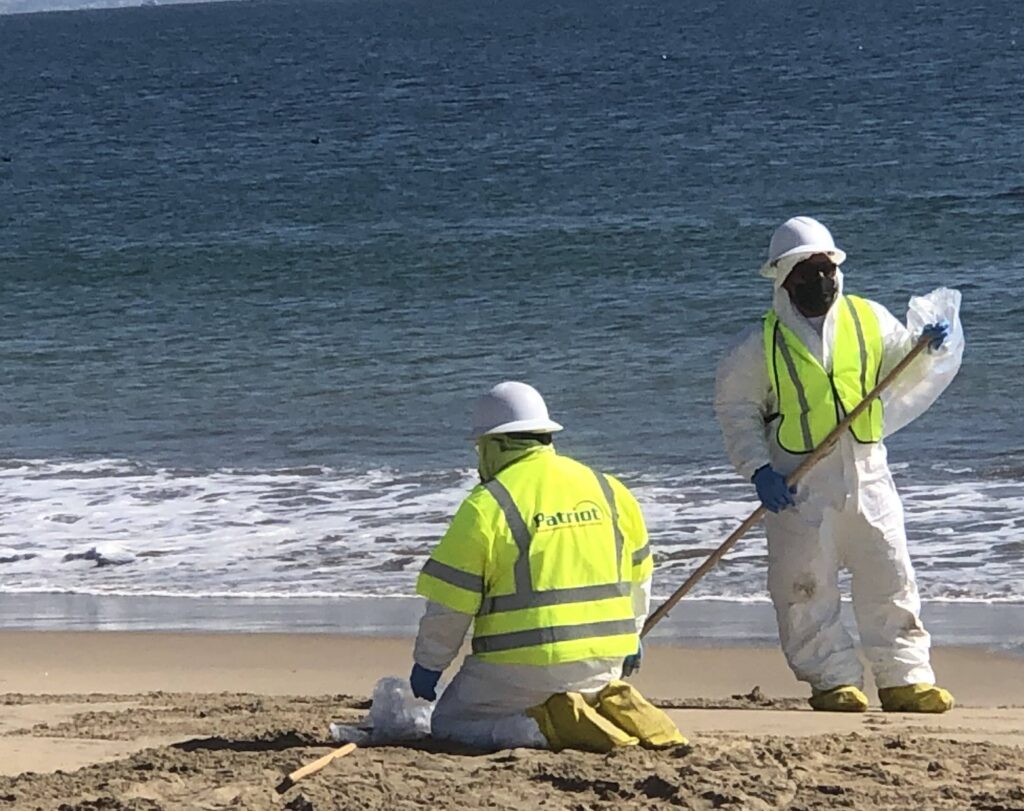
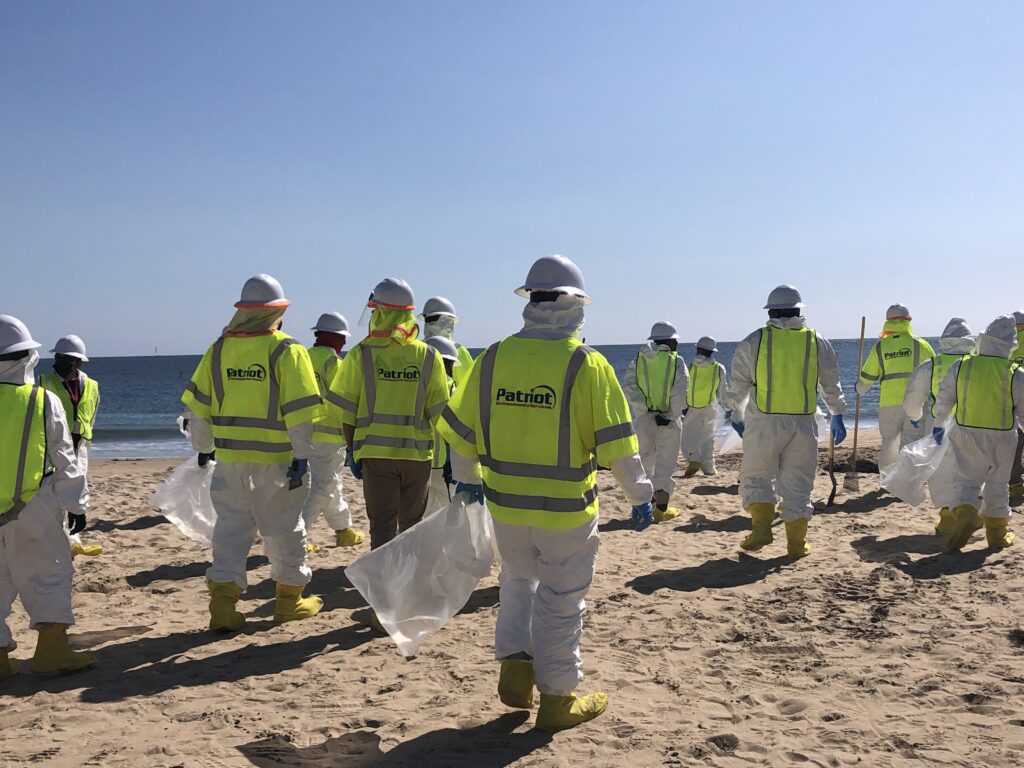
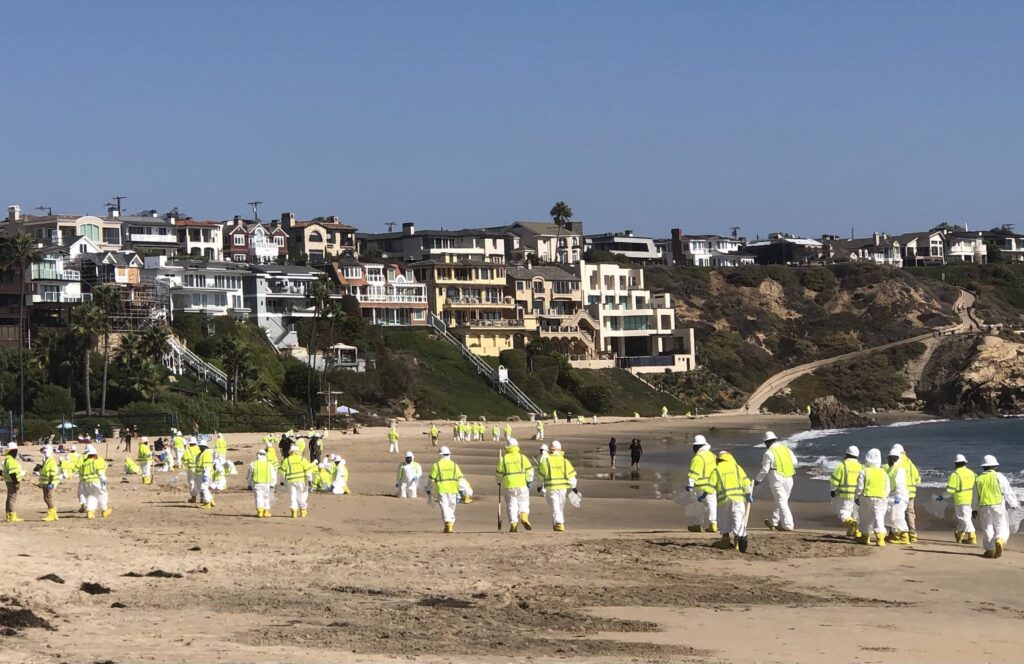
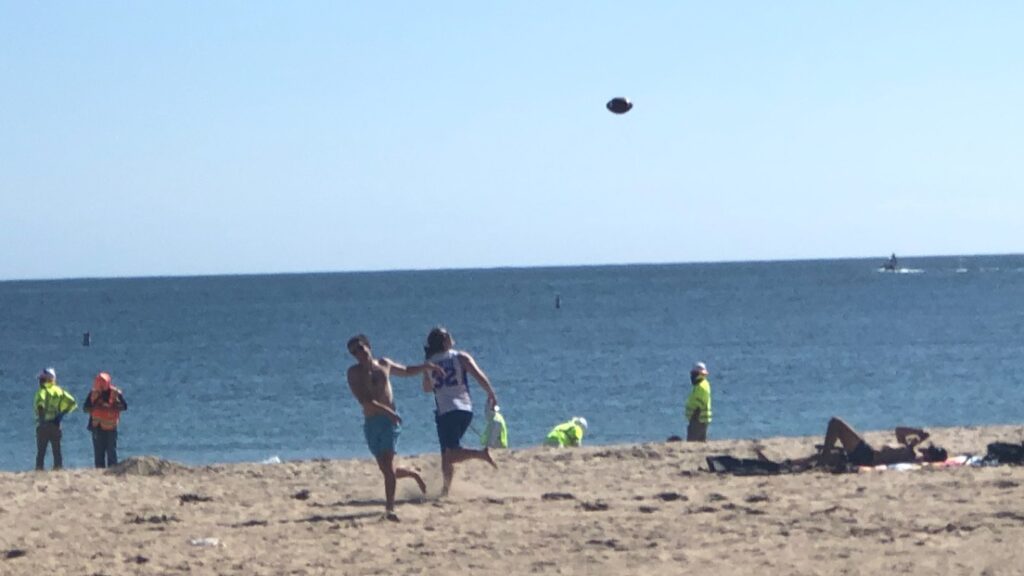
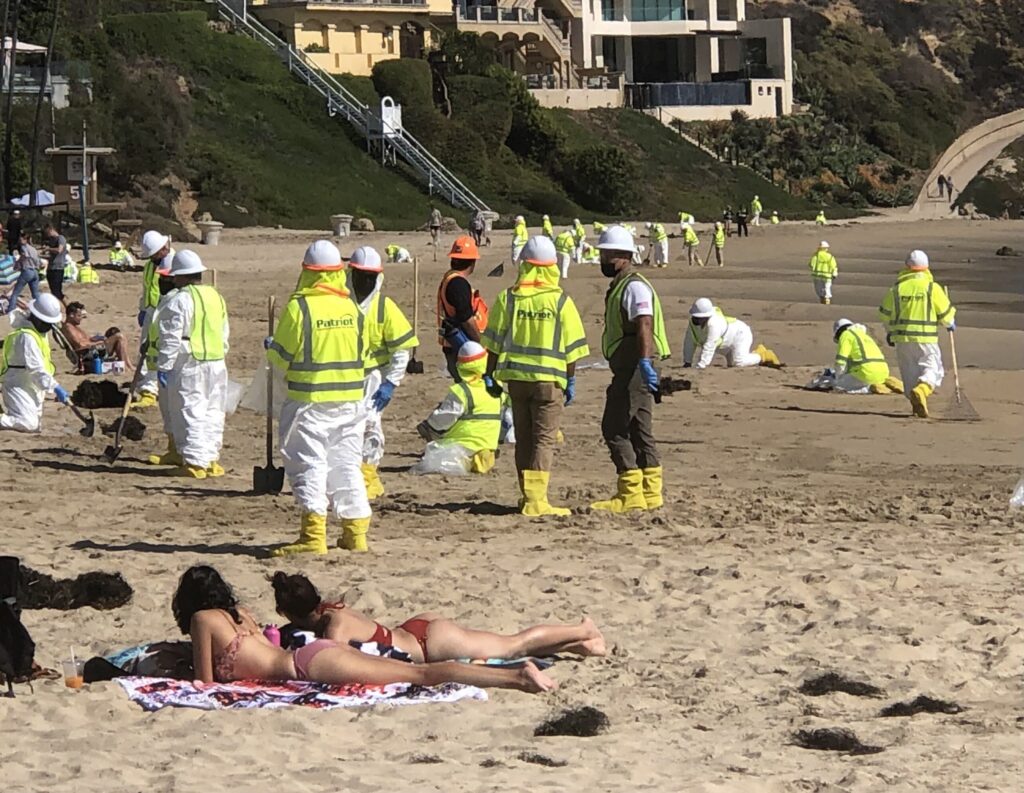
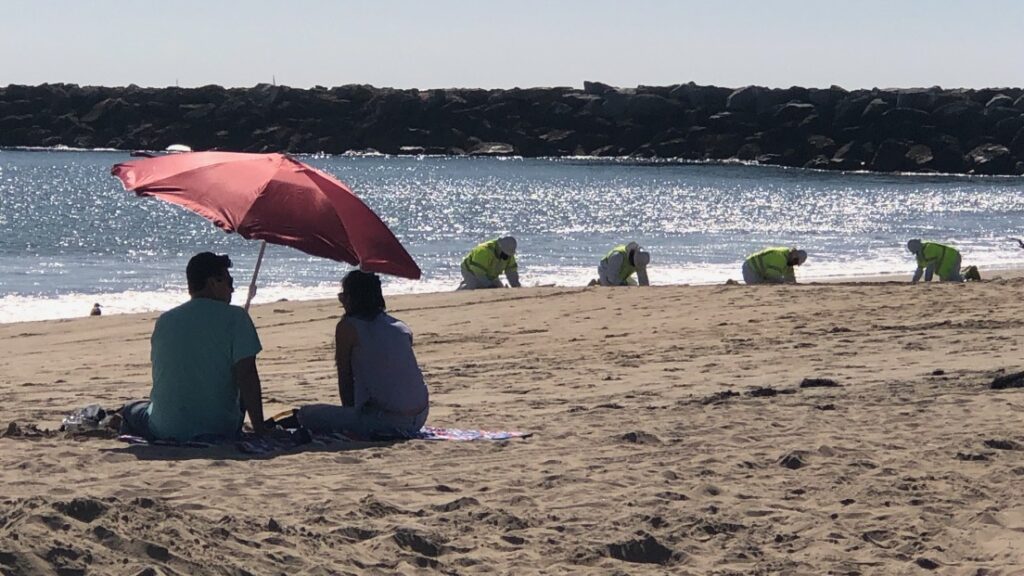















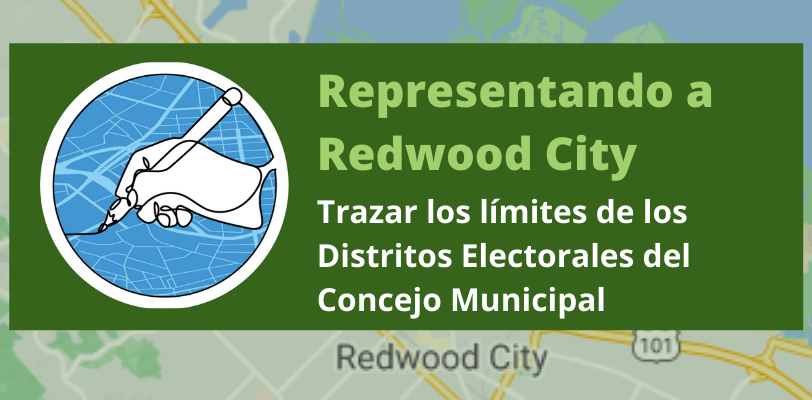
The Redwood City Redistricting Advisory Committee (ARC) wants to hear residents' ideas on where to draw the lines for electing City Council members for the next decade, so it's calling for input and suggestions for the upcoming redistricting.
After the final 2020 Census results are available and the data shows how the community has changed over the past 10 years, the ARC is asking the community for their help in balancing Redwood City's 84,423 residents among the 7 City Council districts.
Thus, the committee has asked to submit their maps by October 25 for consideration by the ARC on November 3.
Redistricting in Redwood City is a community-driven process and there are many ways to get involved.
Tasked with recommending one or more maps to the City Council by December 6, 2021, the ARC invites the community to get involved in the District Mapping process (draft maps) either online or in person in both English and Spanish for consideration.
To facilitate the process, the City has launched mapping software that allows you to draw maps of 7 City Council Districts with 2020 Census data while being able to verify that the draft maps submitted meet legal requirements, which include:
That the district populations be reasonably equal in population-about 12,060 residents per district; and that the districts be geographically contiguous, considering topography, geography, cohesion, continuity, integrity, and compactness.
In person, residents can walk-in to City Hall or the downtown Redwood City library, where trained bilingual staff will be available to help them complete and submit a preliminary map, answer questions and provide other information about the redistricting process.
The hours of operation are Monday, Tuesday and Wednesday, 10:00 a.m. to 4:00 p.m.}; while the Redwood City Downtown Library hours are Monday through Thursday, 10:00 a.m. to 9:00 p.m., and Friday through Saturday, 10:00 a.m. to 5:00 p.m., with Sunday hours from 12:00 noon to 5:00 p.m. .
If you prefer to draw a draft map on paper, you can do that too! You can get the printed version at City Hall, any Redwood City library or community center, or you can email districttelections@redwoodcity.org and request that it be mailed to you. Map kits and surveys are available in English and Spanish.
Interested parties can also visit the Redistricting Web site by giving click here for more information.
You may be interested in: San Mateo Redistricting Advisory Commission Ready
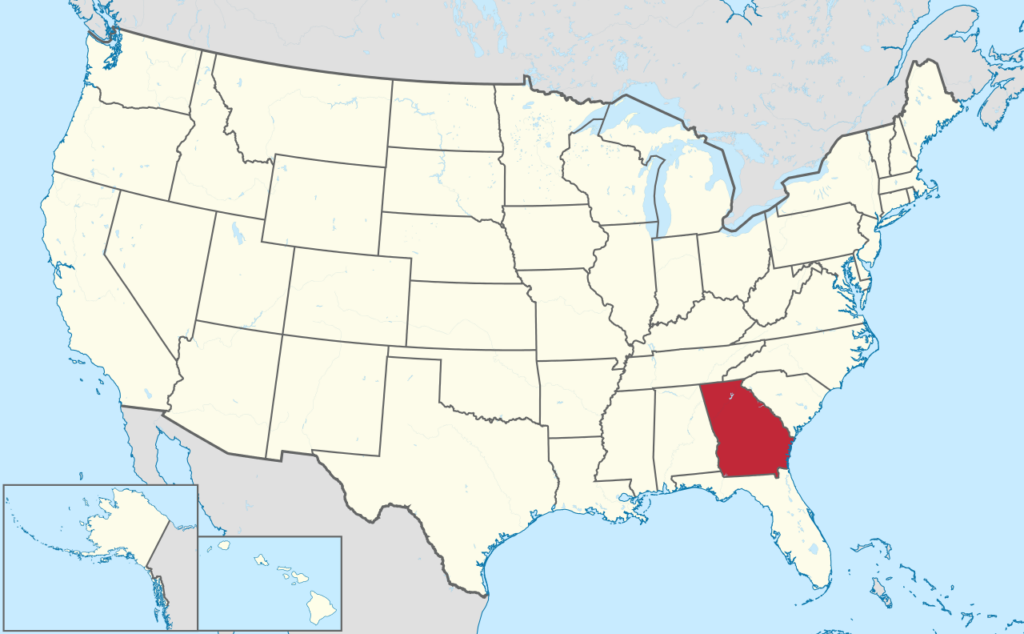
Every decade Georgia legislators draw new voting district maps to reflect population shifts with the goal of achieving equitable representation that includes the voice of all communities of color.
As such, community members have been involved in this process through virtual meetings, webinars and hearings to demand a fair distribution, just weeks before the special redistricting session begins.
However, community leaders from different communities gathered by Ethnic Media Serviceshave delved into the problems they have faced in order to make their voices heard, as it is a process that will affect resources, access to health and education over the next decade.
According to Census Bureau demographer and data dissemination specialist Anh Nguyen, Georgia has become much more diverse and is one of the five fastest-growing states in the U.S. over the past 10 years, with a population of 10.7 million people.
Of these, 33 percent represent the African-American community, which grew 15.8 percent compared to the 2010 census, while 10.5 percent are Hispanic or Latino, a community that grew 31.6 percent in the last decade.
He said the Asian-American community represents 5.3 percent of the total population of the state of Georgia, with a 54.8 percent growth since 2010, while other communities and ethnicities represent 8.9 percent of the population.
According to the U.S. Diversity Index, the state of Georgia has also become much more diverse in the last decade, with 58 percent in 2010 and 64.1 percent in the last census.
Karuna Ramachandran, director of Statewide Partnerships with Asian American Advancing Justice-Atlanta, said she is concerned about redistricting because every person represents one vote and everyone should be represented under the law, however, this process can be used to disempower immigrant communities and elect candidates of their choice.
"Communities of color are growing very rapidly and we should be more represented, not less. Unfortunately, the legislature doesn't have a process that includes a transparency of the community's perspective, it's difficult to create the maps, they don't share the criteria for putting them together and as people of Georgia we should be entitled to this information," she said.
He added that although they have asked the legislature for a transparent process, where the community helps redraw the districts and ensures there is no gerrymandering, there has been no formal response, so leaving them out is a way to alter this redistricting.
Maria Rosario Palacios, founder of Georgia Familias Unidas, commented that language access has also been a key point that has been denied to communities, as many need greater inclusion to better understand the redistricting process.
"In the state there is a significant community of people from Puerto Rico, displaced by Hurricane Maria, but who have not been able to exercise a birthright they have as citizens."
In that sense, he said Gainesville is the second highest district in number of Hispanics, with schools that have a population of up to 70 percent Latino, so redistricting may affect resources and how they are distributed among these communities.
Glory Kilanko, founder and director of Women Watch Afrika (WWA), stressed that the community must understand that this is a once-in-a-decade process, that it is time to create new district boundaries that will determine the political distribution and weighting of communities.
He said one of the organization's concerns is that if communities become divided, it will decrease the way they are represented and have negative impacts on issues such as health services, a situation that occurred at the beginning of the pandemic, when many people in the African-American community were ignored.
"The process is not being transparent and if this continues, history will repeat itself and create a divide in the community of color, so the distribution represents equal access to health care, housing and everyone needs to be actively involved in this process to achieve equal representation.
Victoria Huynh, Pan-Asian Community Service Center, added that the process of districting is reflected in areas such as health, transportation, education, so you can not talk about it without its negative impacts on the population.
In that sense, he explained that the participation in the census was a success, but now it remains to see how this data will be used to obtain resources from the communities, in what areas they will be used and what aspects will be cut in the future.
In addition, many areas are represented by people who do not always have the interests of communities of color at heart, so this can also be a problem.
You may be interested in: Minority Community Leaders Who Made Their Mark on American Activism
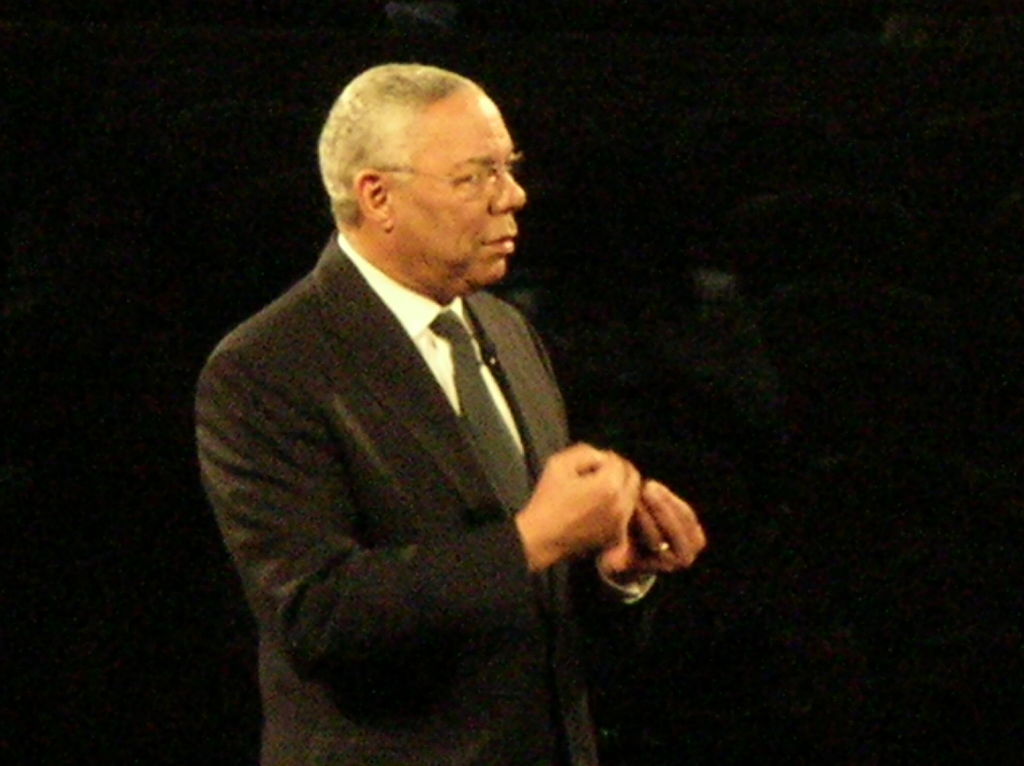
President Joseph Biden and his wife Jill said they were "deeply saddened" by the death of former Secretary of State Colin Powell, who died Monday at age 84, due to complications from multiple myeloma, a cancer of the plasma cells that inhibits the immune response, coupled with COVID-19.
Powell, the son of immigrants, was born in New York City, raised in Harlem and the South Bronx, graduated from the City College of New York, rose to the highest ranks of the U.S. military and advised four presidents.
"He believed in the promise of America because he lived it. And he devoted much of his life to making that promise a reality for so many others," President Biden said in a statement released by the White House.
He also recalled that as a senator he worked closely with him when he served as national security adviser, chairman of the Joint Chiefs of Staff and secretary of state. And that during all those years working together, even when we disagreed, "Colin was always someone who gave his best and treated me with respect.
"Colin embodied the highest ideals of both the warrior and the diplomat. He was committed to the strength and security of our nation. Having fought in wars, he understood better than anyone that military power alone was not enough to maintain our peace and prosperity," he said.
He also noted that Colin led with personal commitment and the democratic values that strengthen the country. "Time and time again, he put country before self, before party, before everything, in uniform and out, and he earned the universal respect of the American people."
He explained that the general repeatedly broke down racial barriers, blazing a trail for others to follow in Federal Government service.
"I will be eternally grateful for your support of my candidacy for president and our shared battle for the soul of the nation. I will miss being able to call upon your wisdom in the future."
Finally, both the president and his wife sent their condolences to their children, Linda, Annemarie and Michael, their grandchildren and the entire Powell family. "Our nation mourns with you. Colin Powell was a good man. He will be remembered as one of our great Americans."
Several countries have expressed their condolences to both Powell's family and the U.S. government for the loss of the official.
You may be interested in: Women: main target of xenophobic hate attacks
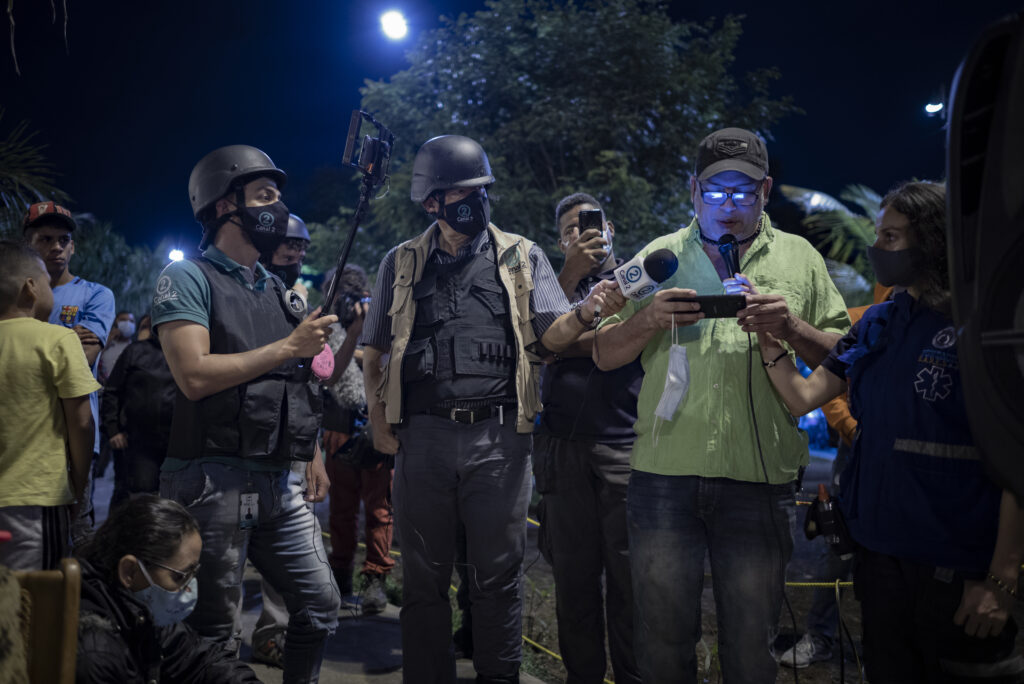
Peninsula 360 Press - Global Exchange
CALI, Colombia - It's after nine o'clock at night. Microphone in hand, José Alberto Tejada Echeverry, "Cucho Tejada", walks through the dark streets of Puerto Resistencia, together with his inseparable cameraman Jhonatan Buitrago, "Papu", until he reaches a small esplanade illuminated by a spotlight.
Puerto Resistencia, a marginal neighborhood in the east of the city, formerly known as Puerto Rellena because of the sausages that were produced here, became the epicenter of the National Strike and the social outburst that began on April 28, 2021.
Tejada and Buitrago make their way through a crowded rally. They are greeted with applause and polite phrases: "Thank you, Channel 2. Tejada knows he is loved by the young people of the neighborhood, whom he defines as "the brave boys who took to the streets and have taken over the country.
According to Tejada, these young people are the children of the third wave of displacement in the last 70 years in Colombia. "They are young people - between 17 and 25 years old - whose parents were displaced from the countryside and now they are excluded from the city.
The entrances to Puerto Resistencia are guarded by young people who wear hoods to protect their identity. And no wonder. In the days of the strike, several of their fellow activists have been killed, disappeared, and even beheaded.
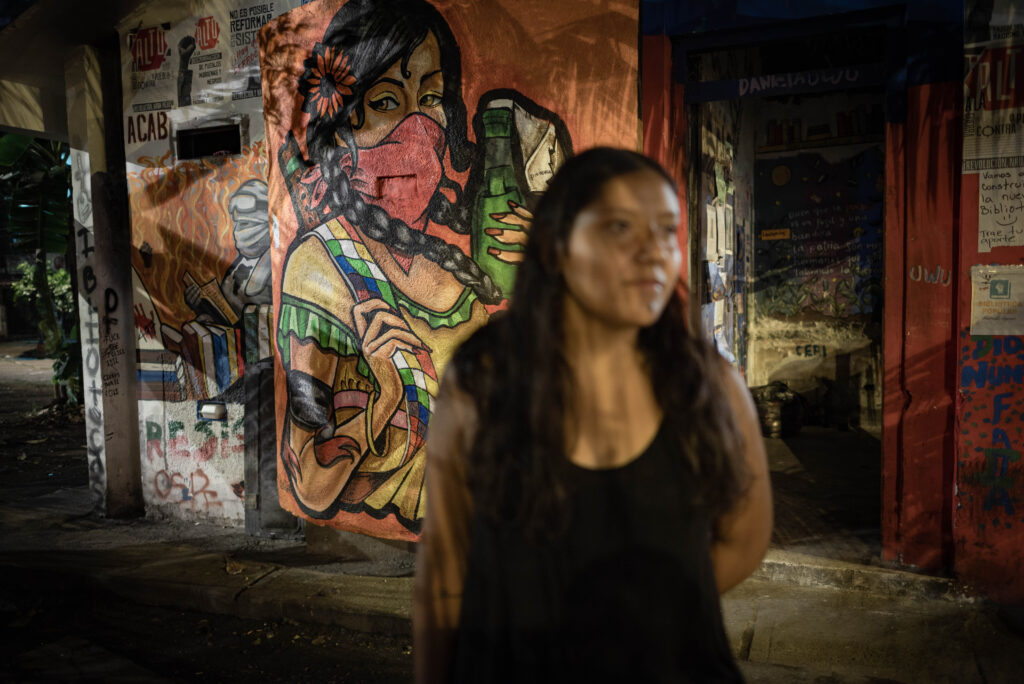
One of several cases is that of Santiago Ochoa, an activist from Tuluá, who was kidnapped while riding his bicycle and later had his head thrown in a bag near his home. Meanwhile, paramilitary groups, such as the Aguilas Negras (Black Eagles), distribute posters in which they point out the activists of the strike as "military targets" to be eliminated.
That's why, they explain to me, you have to be careful with the camera. "Not everyone likes having their picture taken. They're killing us," says a young Afro-descendant woman who prefers anonymity.
Puerto Resistencia is "a point of congregation of people to build utopias" says smiling Valentina, 23, who is one of those in charge of the colorful popular library, formerly a police station, known as CAI (Centro de Atención Inmediata de la Policía).
In this CAI, Valentina assures, "it was used to torture young people and rape women, but since April 28th, when the National Strike began, the boys took over this space in order to give it a new meaning.
- Some people call you "vandals", "violent" or "terrorists", what do you say about that?
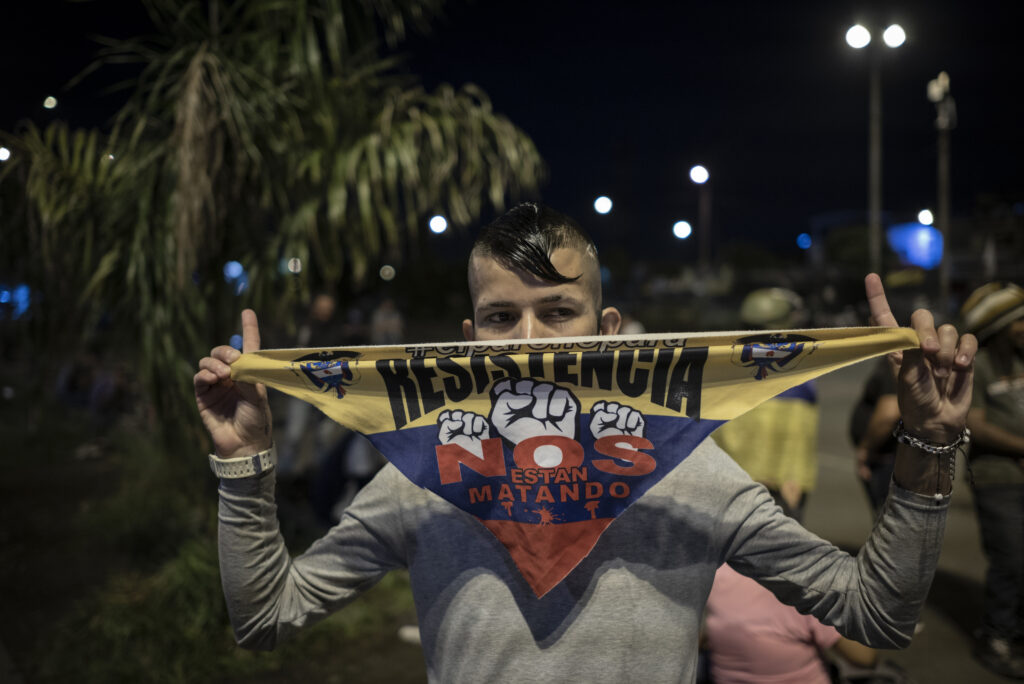
"We are bald, young people who are no more than 25 years old, and the only thing we have here are books and shields to defend ourselves. They [the police] have weapons with which they murder and mutilate us. We're tired of not having a dignified life, we're tired of not having enough to "be someone," Valentina responds.
The next day, in the offices of Channel 2, at the end of the online television program, Informativo Nuestra Gente, hosted by Tejada, Liliana Valencia Agudelo serves the journalist and his guests black coffee with pandebono. Valencia is a friendly woman who both operates a camera in the field and coordinates Tejada's administrative affairs.
As Tejada calmly eats what he says is the best pandebono in Cali for breakfast, he confesses: "I thought the kids were stupid, like they didn't think anymore and weren't interested in anything.
"But when they make this outburst, I open my eyes, I start talking to these kids and I find that they have an amount of information and an ability to argue that I didn't have at their age even though I was a college student."
- You constantly say that the struggle of these young people is unique and meritorious, why do you think so? What is the difference between these young people and the young people of other social movements in Colombia?
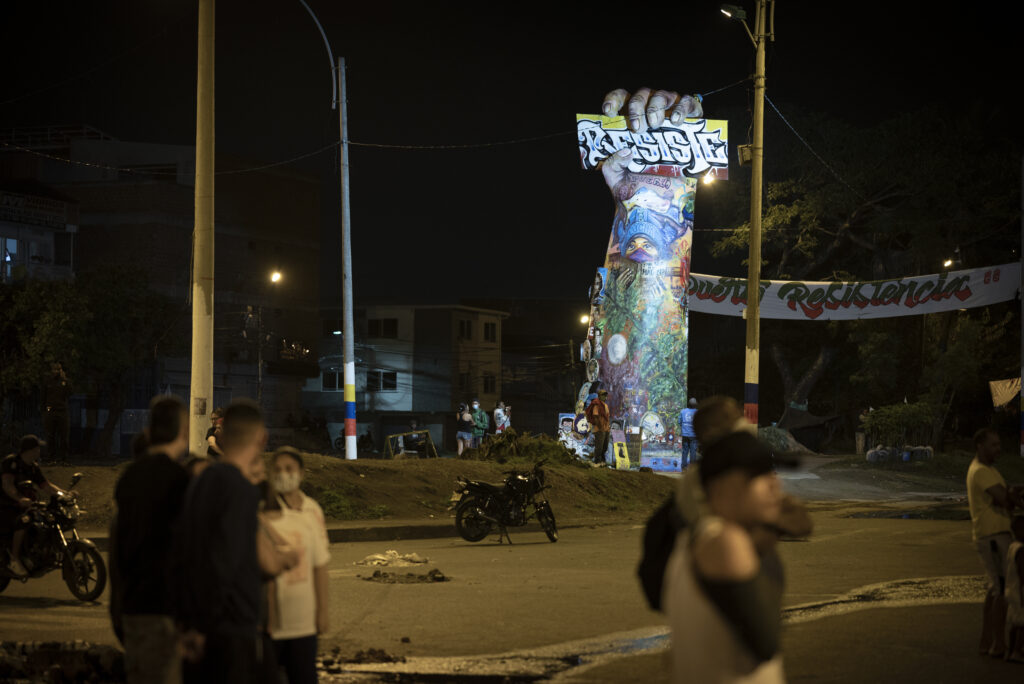
"What I value most in those boys is that I have not felt in any of them a hate speech. In my time, we had hate speech. We hated the boss. What the kids are saying is that we want them to open up opportunities. None of them have said that the rich will end, that the country will end, none of them are asking for anything for free, that's what I value most in them.
Another quality Tejada finds in the young people in resistance is their courage. "They are possessed by the gods. I don't know what has happened to them, but you see, the bullets come from there to here, and they go from here to there. I don't know how they do it. They have a bravery that is almost superhuman... it's as if they have no sense of mortality. That's what's happening to the kids today.
When Tejada goes to rallies, he first spends a long time listening attentively, then makes direct comments and sometimes gives his opinion on what he is told.
Everything is broadcast live on the social networks of Channel 2, one of the few media outlets that has provided coverage of the social outburst from the neighborhoods, taking into account the version of the young people.
- Do you consider yourself an activist?
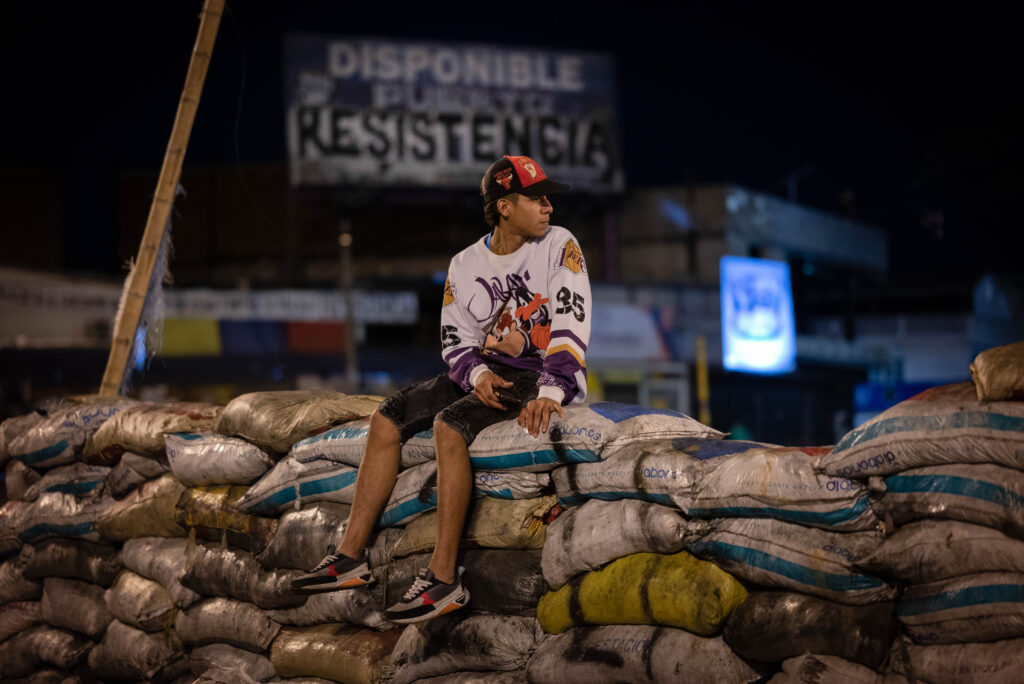
"I am an activist and I am a journalist. I believe that every journalist is an activist, even with his or her silence. To remain silent is also activism.
- You have received death threats, how do you live with that?
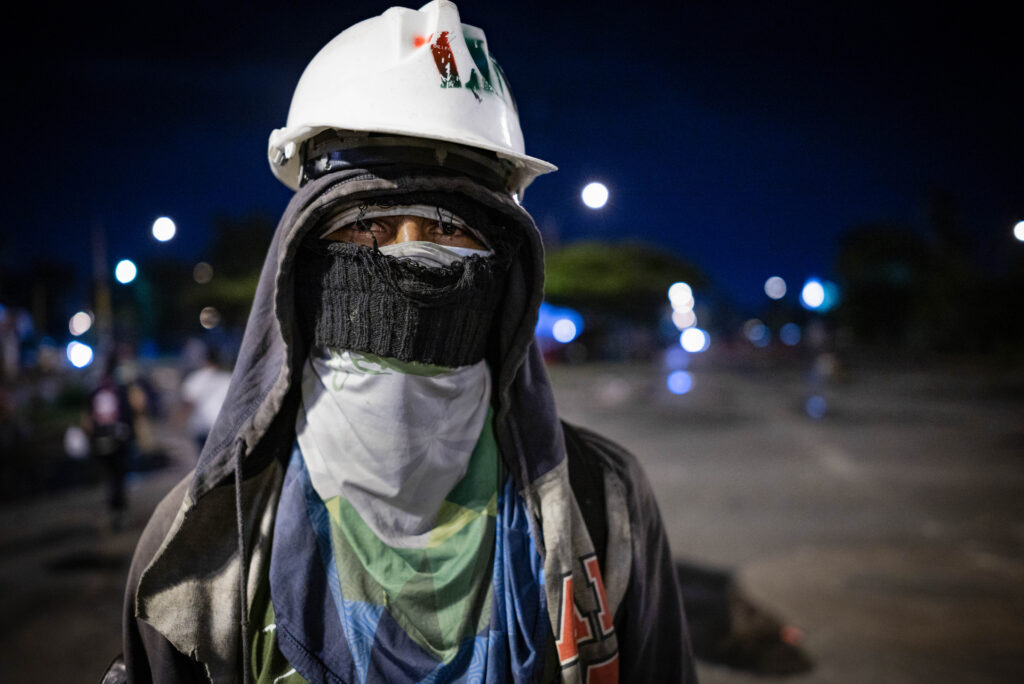
"A policeman [on June 4] told me straight out, this one is good to kill, to shoot him. He said it in public. That day I said to myself, it's true that I am uncomfortable. The night before last at midnight a car arrived, three guys got out and took pictures of the building.
In addition to these threats, for which he began to wear a helmet and bulletproof vest, the Inter-Church Commission for Justice and Peace -CIJP-, a Colombian organization in charge of defending and promoting human rights, announced on July 6 that 30 million Colombian pesos -approximately 7,800 dollars- "have been raised" to "attempt against the life" of the journalist.
And yet, Tejada does not interrupt his intense and committed work. Morning after morning, through the Informativo Nuestra Gente, he analyzes the situation of the country with his guests, always putting young people first.
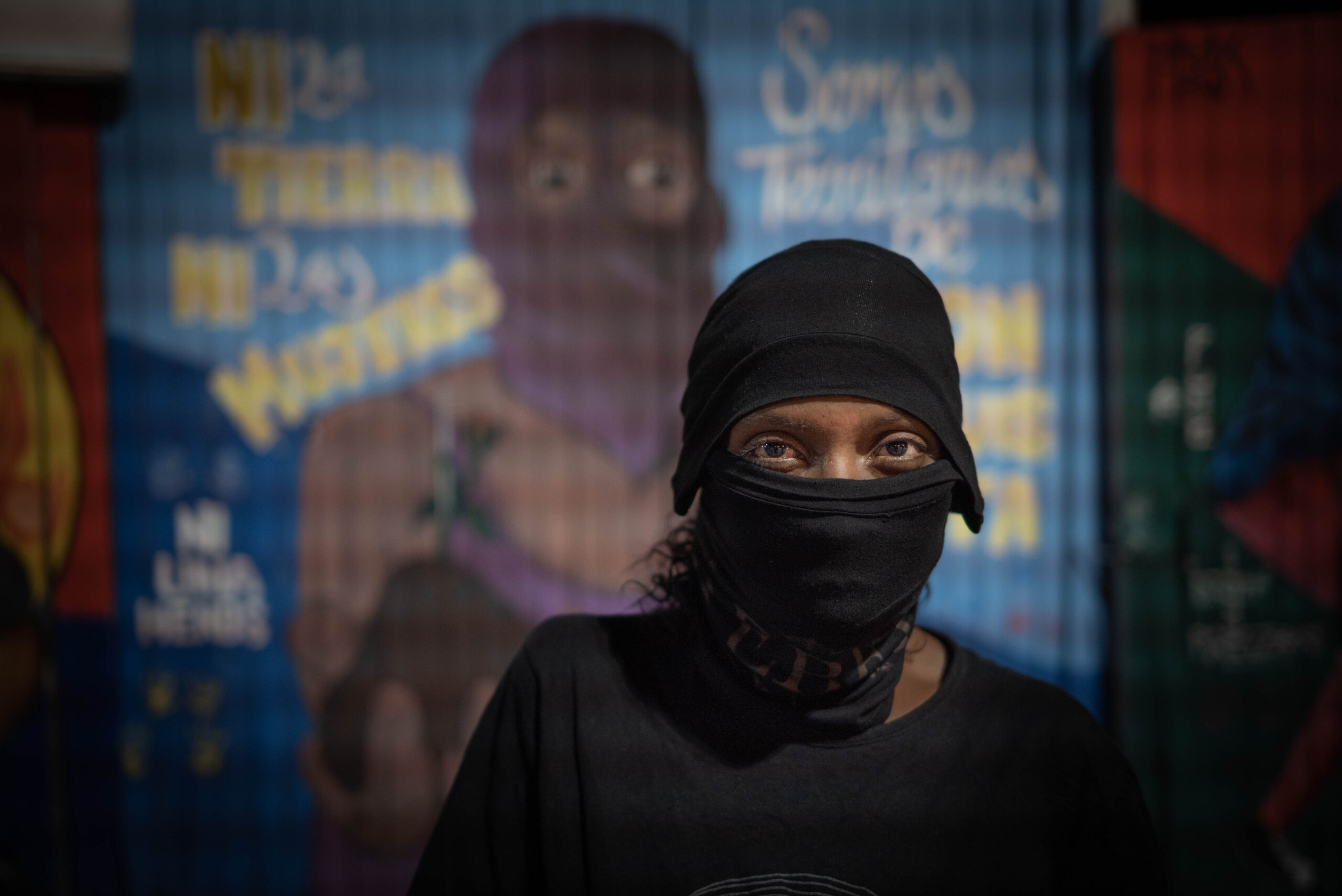
"My decision is to defend the children, the young people. I defend them from the shameful politicians, from the guerrillas who want to use them, from the drug traffickers who want to use them, from the paramilitaries who also want to use them. The young people are the only possibility this country has to move forward, they are about to turn the Colombian mentality upside down, and we need them to turn it upside down.
"My voice goes out when I die," Tejada says serenely, before biting into his pandebono again.
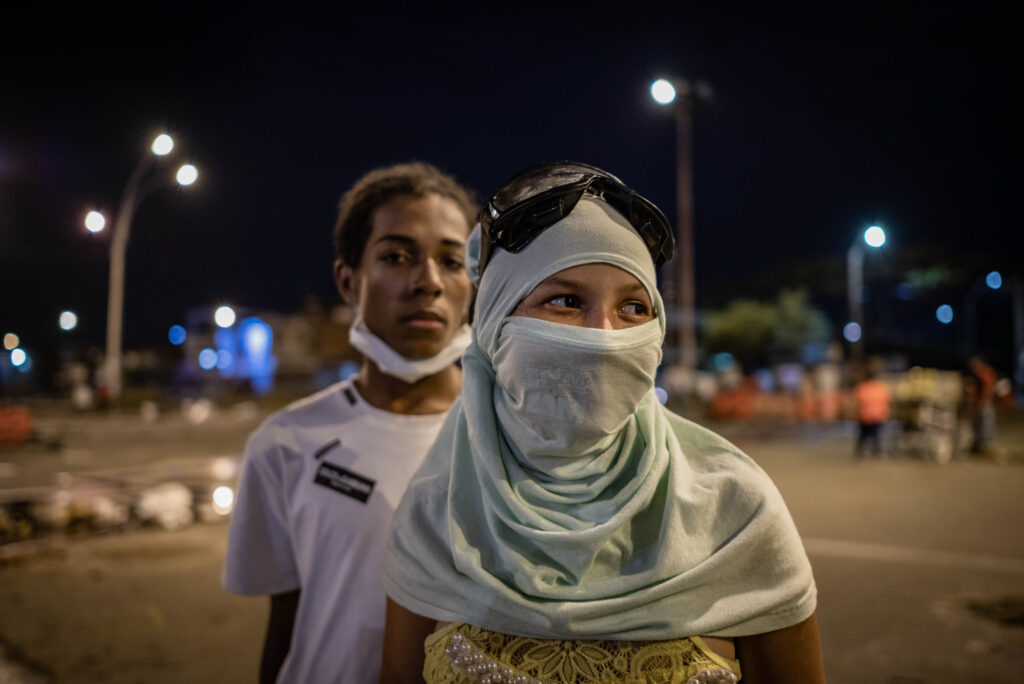
Editor's note
This report was written, with the generous support of the international organization Global Exchange, in the context of the National Strike that mobilized the communities of the poorest neighborhoods of Cali and other cities in Colombia as never before. We decided to include it in this print version because, unfortunately, the cases of brutal repression that Peninsula 360 Press documented at the time remain unpunished, while fellow journalist José Alberto Tejada Echeverry continues his tireless work on behalf of the youth.
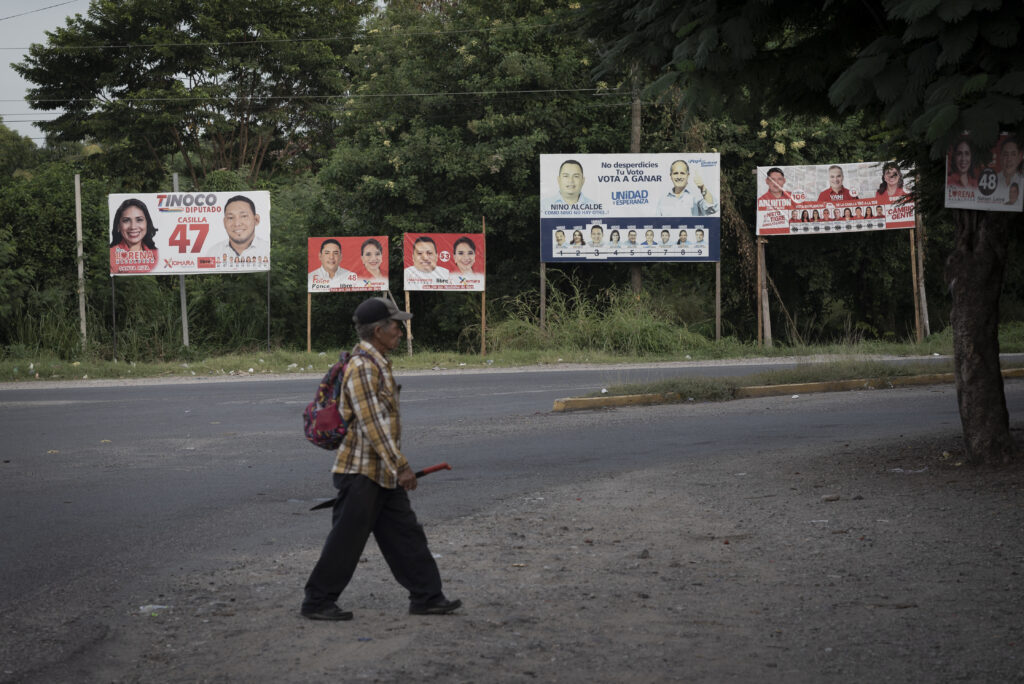
Tegucigalpa - Honduras is one of the nations hardest hit by poverty, violence and climate change in Central and South America; however, the country belonging to the so-called "Northern Triangle", will have the opportunity to change its future in democratic terms and set a trend in the region on November 28, when Hondurans go to deposit their most valuable right in the elections: the vote.
The bulk of the population in Honduras hopes that the November elections will mean a genuine change of government and that, with it, the necessary opportunities will come so that no one else will have to leave in search of a better fortune, taking risks in one of the most dangerous migratory corridors on the continent.
However, it is complicated for Hondurans to believe in the institutions and that their decision will be respected, after Juan Orlando Hernandez Alvarado, the current president, was re-elected in the 2017 elections, which have been called fraudulent due to records that the system reported just over 600 crashes, giving him the victory again.
Hundreds of graffiti on walls all over Tegucigalpa echo "JOH Out," a slogan that demands Hernández Alvarado's departure, not only because he is accused by New York prosecutors of drug shipments and embezzlement of U.S. aid funds, but also because he has plunged the country into a maelstrom of poverty, inequality and lack of opportunity.
According to the Latin American Strategic Center for Geopolitics - Centro Estratégico Latinoamericano de Geopolítica -CelagThere is a daily average of between 10 and 11 murders in a country of approximately 10 million people, which is indicative of the violence in one of the main emigrant-sending countries to the U.S., a fact that is not unrelated to politics.
Thus, Councillor Rixi Moncada, of the National Electoral Council -CNE-, an institution created in 2019 and which will be in charge of these elections for the first time, assured that the current political violence is the result of the coup d'état that worsened in 2013 and continued with such a course in the 2017 elections, where at least 22 young people were killed with official bullets.
"If there is violence that is verified by state institutions, it is clear that the germ of violence is magnified at the level of the neighborhood, the colony, the village or hamlet. Violence only generates violence, and does not require additional research, it is like that throughout history," he said.
For this reason, he stressed that the November elections will be "the most important of the next decade" in Honduras.
He also specified that, in order to achieve elections of true change, the Council administers, organizes and guarantees to be able to arrive on election day with the electoral material in each of the polling stations, despite the fact that conditions in the country are "quite complex".
When questioned about whether these will be clean elections, the councilor stressed that "formally yes", since "the full councilors have worked with hundreds of obstacles these two years and a month, to have an electoral process different from that of 2013 and 2017".
Marco Castillo, co-director of the nonprofit Global Exchange, said Honduran society has lived under siege by state violence and organized crime, as well as increasing poverty, since the 2009 coup, resulting in "proven corrupt governments with possible ties to organized crime that are reluctant to allow free elections.
In view of this, Honduran society is demanding free and transparent elections next November, which, if respected, could represent an opportunity to change the life of a society in crisis at its roots.
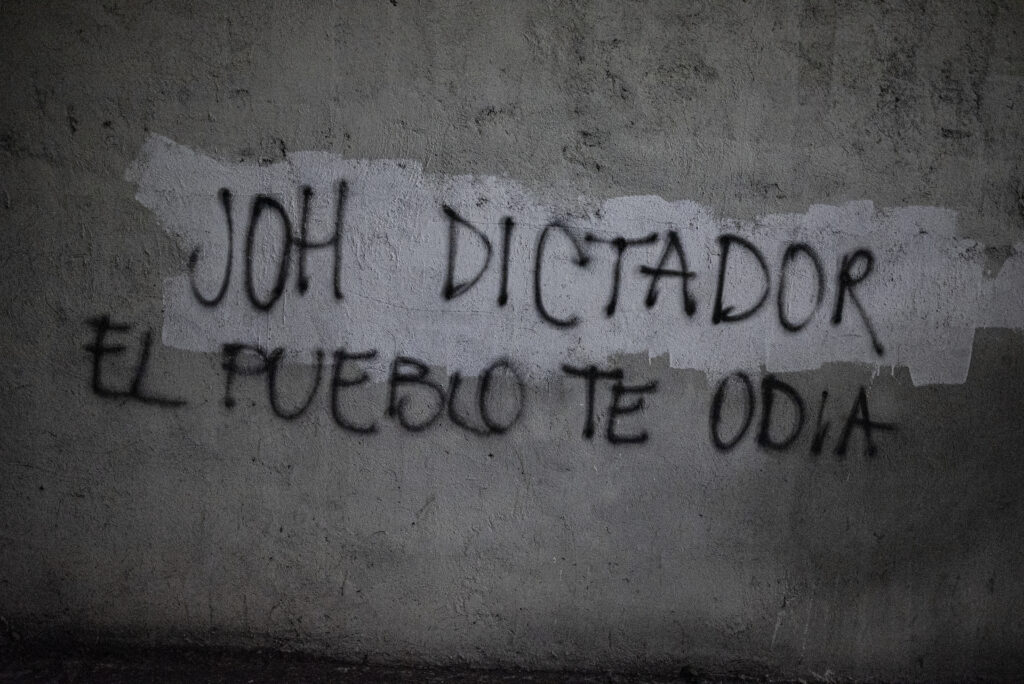
Rixi Moncada said that "to guarantee that in 18,000 polling stations the will of the people will be fully and neatly administered, we will see on election day," because, she explained, this country is "collapsed after the coup d'état.
"It is a state that has formal authorities, that has constitutional institutions, that has buildings and appointed officials, but it is a state without justice and it is a state where formally guaranteed rights, in practice are a real tragedy," he stressed.
The main challenge, with just over a month before the general elections take place, is that in the more than 18,000 polling stations there should be at least one electoral suitcase, the ballots for the three levels of elections, a polling station integrated in the manner established by the new Honduran electoral law, and that, afterwards, "the members of these stations should assume their historic responsibility to their communities, not just to a central body".
According to the director of the Center for the Study of Democracy in Honduras - Centro de Estudios para la Democracia en Honduras -Cespad-, Gustavo Irías, from December 2020 to date there have been 20 candidates for various positions murdered, a figure that doubles the numbers recorded in the 2017 elections, which accounts for the violence that is lived in the face of a little more than five million people cast their suffrage.
This political violence, he said, while it is true that it has a long history in the country, has deepened since the coup d'état, which left nothing but misery and constant fear of human rights violations, as well as a country in defenselessness and without the rule of law.
Therefore, these elections, said Irías in an interview, "are the great historic opportunity for Honduran society to be able to make effective a change in the authoritarian regime, to be able to recover the democratic setbacks, the rule of law, restore human rights and to have an opportunity to open the way to push for a series of significant reforms, which are more than necessary to address the multiple crises that the country is experiencing.
Just Wednesday, October 14, in order to strengthen the opposition to the National Party regime, which for these elections appointed Nasry Juan Asfura Zablah, better known as "Tito Asfura" or "Papi a la Orden", the presidential candidates of the Salvadoran Party of Honduras -PSH-, Salvador Nasralla, and of the Liberty and Refoundation Party -Libre-, Xiomara Castro, decided to form an alliance a little over a month before the general elections take place.
Thus, Nasralla abandoned his race for the presidency, and has joined Castro's campaign to "get rid of this dictatorship" and "recover peace, justice and equality.
The November elections, to which more than 5.1 million Honduran citizens are called, will also elect three vice-presidential appointees, 298 municipal mayors, 128 deputies to the local parliament and 20 to the Central American Parliament.
It should be noted that after the passage of hurricanes Eta and Iota in November 2020, the country registered damages that compromise social development and economic growth, as they left at least 3.5 million people affected and half a million internally displaced; in addition to an impact of about 40 percent of GDP, so these elections could be a restart in all senses for Honduras.
You may be interested in: Resonances in the cultural sphere of the 2009 coup d'état in Honduras
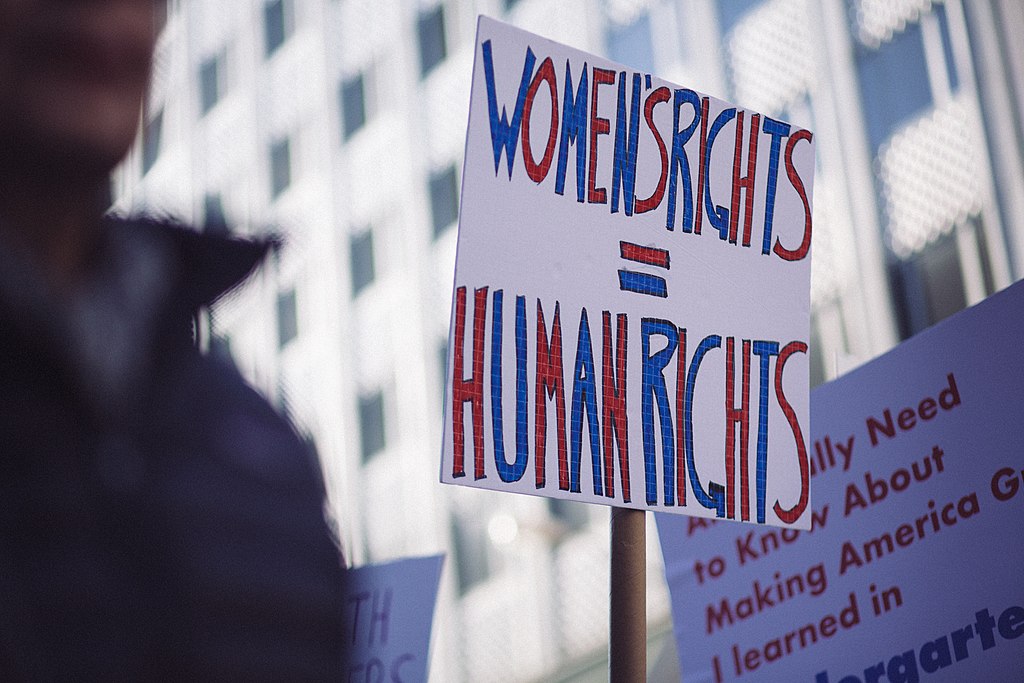
Muslim, Asian and Latina women are the main victims of xenophobic attacks in the United States, in the context of the increase in hate crimes against immigrants.
Experts convened by Ethnic Media Services They claim that this is not a new phenomenon, but rather has historical roots.
“Hate crimes against Muslims predate the september 11“Women (76.7%) are more likely than men (58.6%) to experience Islamophobia,” explains Basima Sisemore, a researcher at the Global Justice Program at the Othering & Belonging Institute.
One of the main reasons why Muslim women are attacked is because they are more easily identifiable and therefore become easy prey. That is, their clothing, adornments, hijab, immediately distinguish them.
“This culture is perceived as being against Western ideals, and there is also the idea that Muslims are against democratic values. But what are Western ideals or democratic values?” Sisemore asks.
The research of the Othering & Belonging Institute’s Global Justice Program addresses issues related to Islamophobia, human rights, and exclusionary practices that disenfranchise immigrants, refugees, and communities of color.
Elsadig Elsheikh, the director of the Programme, explains that “Islamophobia makes it difficult for Muslims to relate to other Muslims. This is due to persecution: younger people hide their religious identity. More than 9 out of 10 women (91.8%) censor their speech or actions for fear of people’s response or reaction, and attract violence against them.”
The media contributes to the idea of “otherness” by reinforcing the premise that Muslim women are “left behind” compared to their male counterparts. How can we report on Muslim culture correctly? It is important to allow Muslims to speak for themselves. The same goes for all ethnicities and cultures, the media must allow groups to speak for themselves.
In the case of the West, Elsheikh explains, “there are a multiplicity of countries and ethnicities. There are Arabs who are not Muslims and not all Muslims are Arabs.”
In the case of Asian women, according to Helen Zia, activist and author of the book Asian American Dreams: The Emergence of an American People, the “rise in hate crimes against Asian American women is clearly linked to COVID-19 and intensified by our former president. Of nine thousand incidents in the past year, more than 60 percent have been against women, especially Asian girls.”
The latest reports of attacks against Asian women are actually nothing new. It is a problem that has been largely ignored and made invisible.
“Those who carry out racist attacks against people of color have always claimed that the victims are “less than human,” so women are even more expendable… therefore there is a double, triple jeopardy for them.
“They are also less likely to report, because they feel diminished and blamed. They may even face stigmatisation when reporting. Women of colour are not treated well by social institutions. They are not taken seriously and they are not treated with respect,” Zia explains.
According to experts at the EMS-convened conference, the sexualization of women of color plays a role in the incidents.
“Penthouse published a photo of a young Asian woman in BSDM; two months later a little Asian girl was found dead in the same position that the magazine had shown the model in. In the case of the little girl, she had been raped, tortured, tied up, hung and lynched,” Zia said.
“Migrant women in particular have faced many forms of violence from their countries of origin and seek refuge here. Many have been victims of sex trafficking, and sometimes fall prey to human trafficking here,” explains Irene de Barraicua, Director of Operations and Public Relations Manager of Líderes Campesinas, an association that represents the culmination of decades of work by women farm workers.
Líderes Campesinas provides these activists with a support system against domestic violence, sexual harassment, opportunities to coordinate their work across the state, and has created collectives so that campesinas can become agents of change and be a more effective unified voice.
“Latina women are sexualized, and fear of deportation and retaliation makes them more susceptible to violence and sexual abuse. In addition, a high number of women living in poverty are often the first to be laid off when there are workforce cuts, as happened during the pandemic. In addition, they cannot seek care due to institutionalized violence. It is a form of modern slavery,” said de Barraicua.
You may be interested in: Non-consensual condom removal during sex could be illegal in California
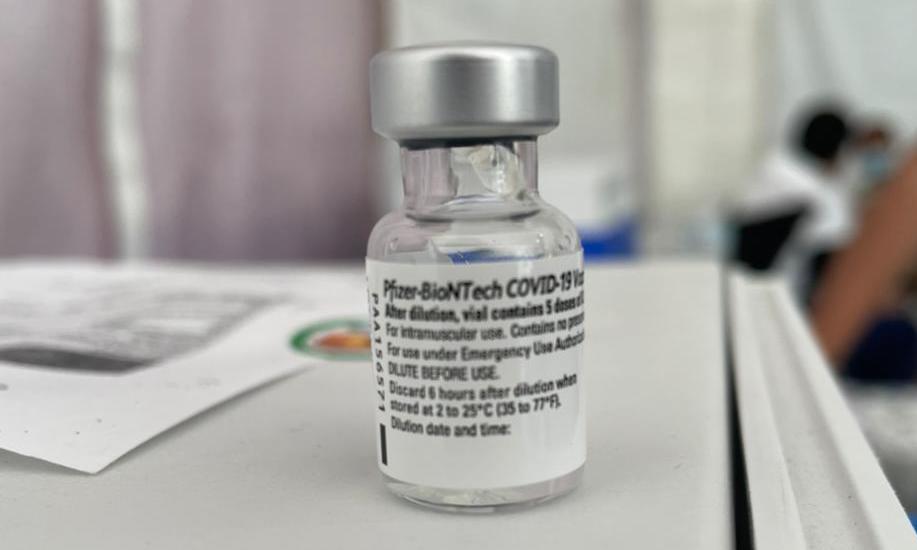
After cases of COVID-19 in children in the U.S. continue to rise, Pfizer and BioNTech applied to the U.S. Food and Drug Administration (FDA) for emergency approval of their vaccine for use in children 5 to 11 years of age. (FDA) for emergency use authorization of their vaccine in children 5 to 11 years of age.
Both the pharmaceutical and the biotech company said the application "is an important step in our ongoing effort against COVID-19.
They noted that, according to the American Academy of Pediatrics and the Children's Hospital Association, from Sept. 16 to Sept. 30 of this year, there was a 7.0 percent increase in the cumulative number of cases of children with COVID-19 since the pandemic began.
In this regard, he noted that to date, children account for 16 percent of the total cumulative cases of COVID-19. Meanwhile, during the last week of September, children - under 18 years of age - accounted for 27 percent of all weekly COVID-19 cases in the country.
"We are committed to working with the FDA to help protect children from this serious public health threat," Pfizer said on social media.
So far, the FDA has only licensed the Pfizer/BioNTech vaccine -Comirnaty- for use in people 12 years and older, with one 30-microgram dose injected in the arm and a sequence of two more 21 days apart.
Just last September 28, the companies announced positive top-line results from the trial involving 2,268 participants aged 5 to 11 years, in which the vaccine demonstrated a favorable safety profile and elicited robust neutralizing antibody responses using two doses of 10 micrograms each.
These results, the first from a pivotal trial of any COVID-19 vaccine in this age group, were comparable to those recorded in an earlier Pfizer-BioNTech study in 16- to 25-year-olds, who were immunized with 30 μg doses. The 10 μg dose was carefully selected as the preferred dose for safety, tolerability and immunogenicity in children aged 5 to 11 years.
Pfizer-BioNTech COVID-19 vaccine based on mRNA technology
Meanwhile, White House COVID-19 response coordinator Jeff Zients told CNN that the vaccine for children could be ready before Thanksgiving, following Pfizer's request for emergency use authorization this morning.
The announcement comes just days before Halloween is celebrated in the country, when millions of children take to the streets in search of candy, a date that last year was diminished by the pandemic that was showing its worst face at that time.
In turn, it comes to reassure the requests of millions of parents who have shown their concern and need for their children to be vaccinated after classes have begun across the country.
You may be interested in: Third Dose of COVID-19 Vaccine Divides Opinion Among Scientific Community
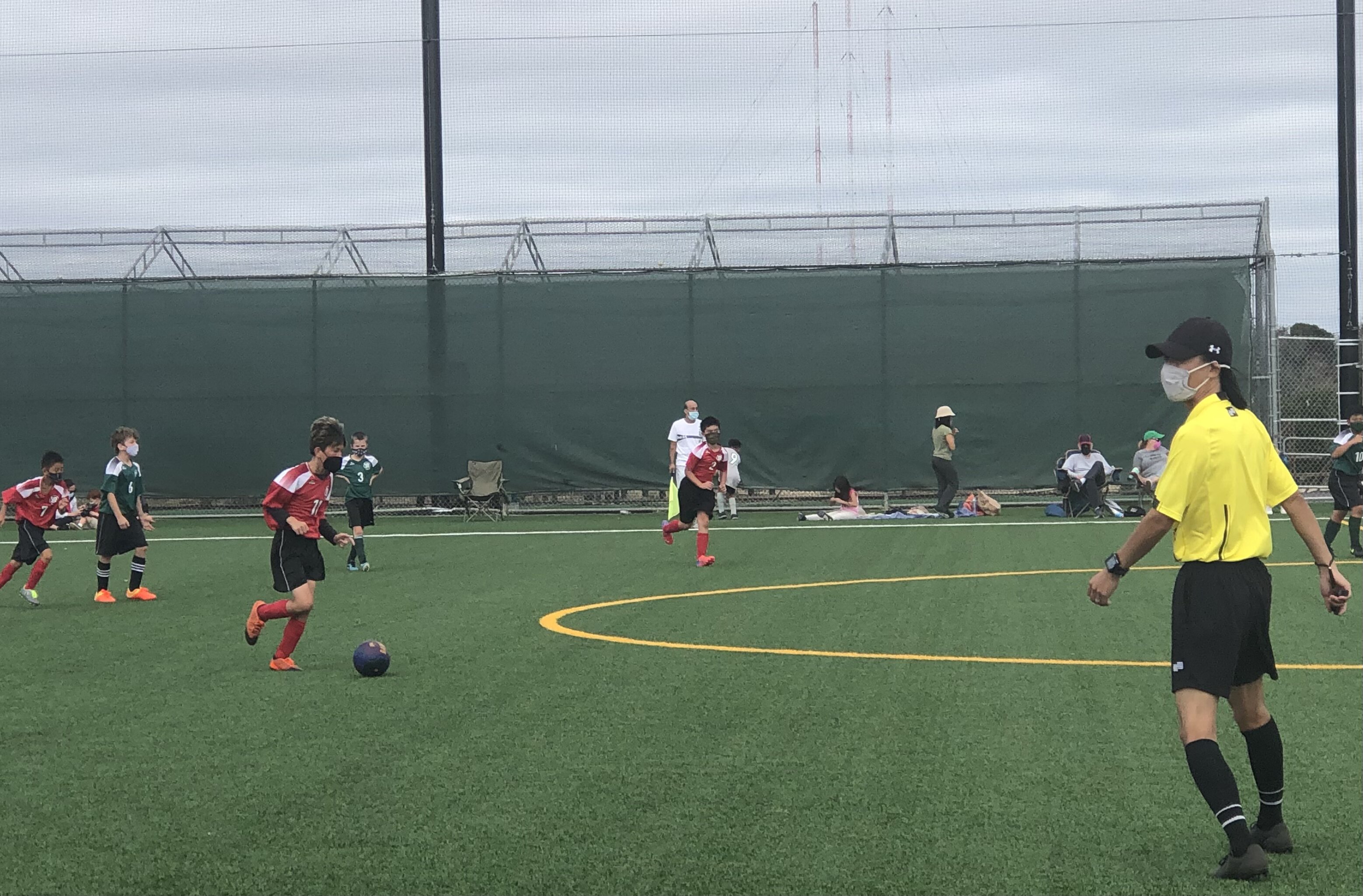
This opening weekend of the football season in AYSO It brought with it soccer balls, shin pads and cleats, but also, the mandatory use of mouth masks and some dissensions.
Throughout the Bay Area, young people are returning to a variety of fall sports, many of which were interrupted by the quarantine a year ago. The current COVID-19 pandemic and the Delta variant has teams and league officials trying to balance health and safety with the desire to get kids back on the field; however, with differing opinions and policies on safety rules, such as the use of mouth covers and vaccinations, league officials are in a difficult position.
"We're all looking forward to putting the pandemic and all of its restrictions behind us, but we're not there yet," said Belmont Parks and Recreation Director Brigitte Shearer.
Shearer explained that there are many levels of guidelines: basic precautions are mandated by the state and county, the next include city-specific statutes, and other precautions are up to individual leagues.
Currently, according to the San Mateo County Announcement As of May 19, fully vaccinated persons do not have to wear face shields outdoors, except when physical distance cannot be maintained.
In Redwood City, Community Services Director Eric Newby stated that the city closely follows state and county requirements.
"So far we have not seen any cases and we are constantly monitoring developments," Newby said.
The City of Belmont's policy adds one of the strictest guidelines, citing, "The majority of our face-to-face programs and sports teams are designed for youth 12 years of age and younger, most of whom are not currently eligible to receive the vaccine." Given the recent CDC guidelines of May 16, stating that unvaccinated children should continue to wear masks and maintain physical distance, Belmont's current policy is to "continue to require youth and staff to wear masks indoors and outdoors."
The municipal rules affect all leagues playing on their fields. Zeljko Zivkovic, AYSO Regional Commissioner, started the season with a carefully worded letter asking families to follow the rules and regulations. city guidelines.
Joe Revels, president of the Belmont Redwood Shores Little League, BRSLLissued a similar statement:
"I know it is not ideal, but we must insist on 100% compliance. The safety of our children is extremely important to us and compliance with all mandates per COVID-19 is our best tool to do everything we can to keep them safe. In addition, we could face cancellation of our fall program and loss of permits if the City of Belmont deems us non-compliant." said Revels.
However, not everyone agrees with the more restrictive practices.
At the Belmont Sports Complex on the first day of the AYSO season, a U-12 girls soccer game was delayed because coaches and referees disagreed over the different policies for wearing face masks by COVID-19 during intercity play. Belmont players were required to wear masks and asked the visitors from Menlo Park to comply.
Menlo Park coach Andrew Tiley felt the delay was unnecessary, as his team had trouble finding mouth covers for all the players.
"It's not necessary. Kids are outdoors, and there's little risk of infection. Our league suggests mouth covers, but they are optional," Tiley said.
However, father Bence Oralai, whose son plays for a football team of Belmont Unitedsupports the use of mouthguards. "If it makes things safer, it's a way to keep our kids healthier and able to enjoy fun, healthy activities like soccer," Oralai said.
Newby and Shearer agreed that, in the case of playing other cities, the rules of the city's host venue would prevail. "If a Santa Clara team came to play in Redwood City, they would have to follow San Mateo County guidelines," Newby said.
In addition to the variation in umpire policies, enforcement has been another ongoing problem. While soccer and BRSLL baseball adhere to the use of mouthguards, softball players and BRSLL baseball players have been more likely to wear mouthguards than softball players. Babe Ruth does not. Shearer acknowledged that the policy is difficult to enforce, and that it relies on league commissioners to follow the rules.
Belmont Little League players play with mouthguards, although many youngsters find it difficult.
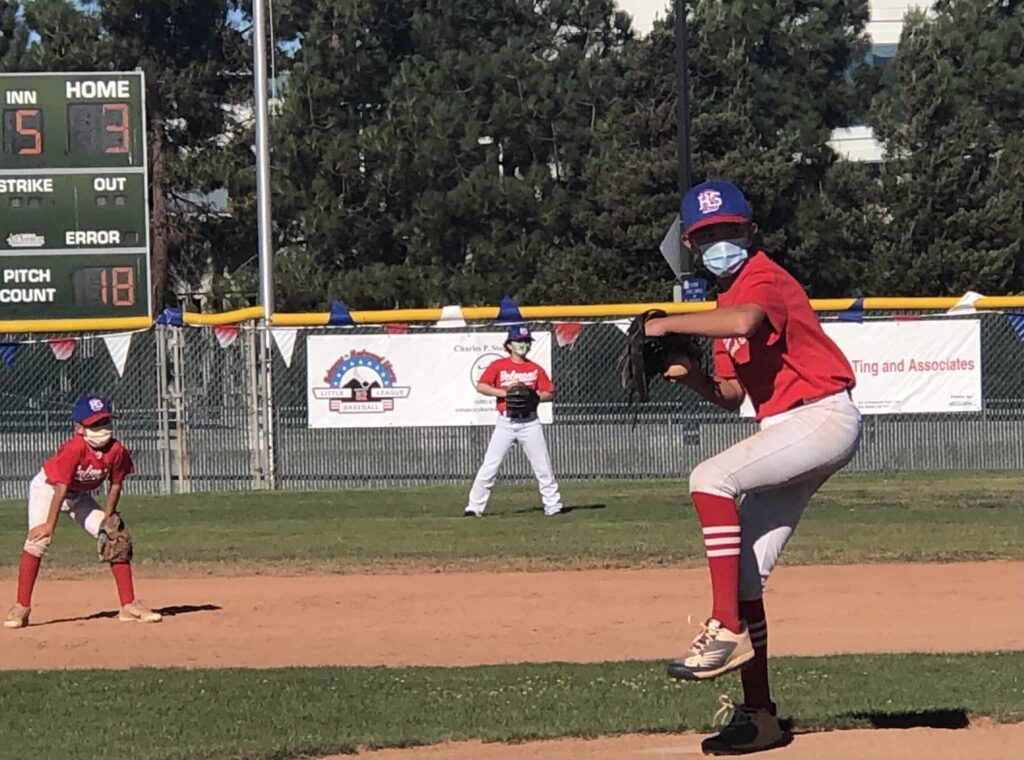
Some young players don't like masks.
"Actually, I don't like the mouthguards. They make it hard for me to breathe when I run, and it's really hard when it's hot. Plus, I can't see my friends' faces," says Elliott Sternke, 11.
Elliott's brother Oliver, 10, agreed: "They're all annoying."
Despite the players' discomfort, the increasing number of pediatric COVID-19 cases forces league and city officials to be ever vigilant.
Matt Kerby, regional referee and AYSO board member, believes that mouthguards are the best tool to prevent COVID-19 in these circumstances.
"No one likes to wear facemasks, but it's a low-cost tool to reduce the risk of transmission. Player safety is AYSO's number one priority and the facemask contributes to the safety of everyone, especially the unvaccinated, for whom we are responsible," said Kerby.
Security precautions for COVID-19 are not the only problem posed by the leagues, as organizers also have to deal with the volatile air quality fueled by the recent fires. In Belmont, the city is demanding that youth sports be cancelled if the air quality index is over 200, which sometimes forces coaches to stop training at the last minute.
Shearer offered some optimism in the midst of the pandemic: "With today's news that one vaccine for ages 5 to 11 years old may be available soon, comes the hope that we can modify our guidelines in the future."
Amidst the many challenges ahead, it will be up to cities and league officials to enforce current and existing policies, while remaining mindful of rapidly occurring and ever-changing conditions.
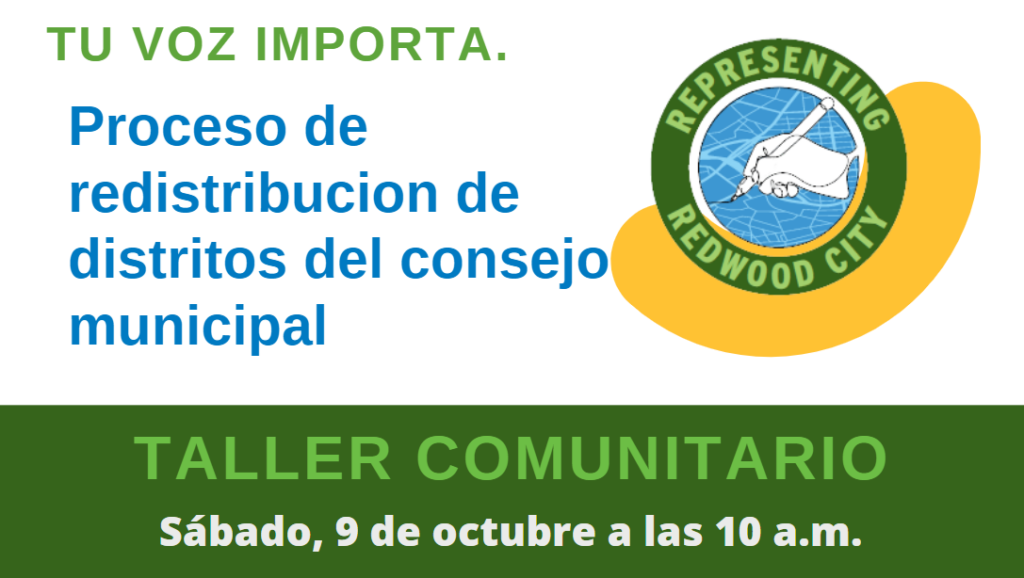
Next Saturday the City of Redwood City will hold a community redistricting workshop. The event will be held on October 9 at 10:00 a.m. (Pacific Time) via the Zoom platform.
"We hope to share a brief summary of how we moved to district elections, why we need to redraw the current City Council District Map and how to get involved to make your voice heard throughout the process."
Like a jigsaw puzzle that requires all the pieces to complete, organizers said, all community voices need to be heard to ensure that future City Council districts best represent residents.
The workshop will begin with a presentation by the City's redistricting consultant, followed by a demonstration of the online mapping tool; after the presentation, a session will be opened for questions and comments from participants' communities of interest.
In order to join the Zoom meeting you can access through the following link https://redwoodcity.zoom.us/j/98707480568with meeting ID 987 0748 0568.
For more information about the redistricting process and upcoming workshops, please visit the www.redwoodcity.org/redistricting
